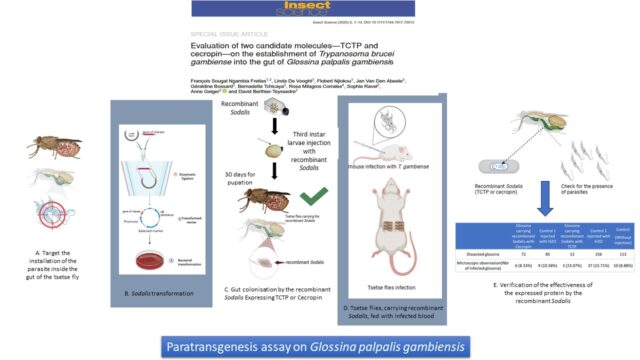
Graphical abstract
Sleeping sickness, a deadly disease transmitted by tsetse flies, poses a significant threat to millions of people in sub-Saharan Africa. While current control methods such as insecticide treatments, can be effective, the flies often return, perpetuating the cycle of transmission. This study explores a new method called paratransgenesis where scientists from the Centre for Research in Infectious Diseases (CRID) and the Institut de Recherche pour le Développement (IRD) genetically modify bacteria that naturally live inside tsetse flies. These engineered bacteria are designed to produce substances that can kill or weaken the trypanosome parasites before they can be passed on to humans or animals
In the research, two special proteins—cecropin and TbgTCTP—were produced by the modified bacteria and introduced into tsetse fly larvae. The goal was to see if these proteins could reduce the number of flies infected with the parasite. While the process of injecting the bacteria into the larvae was technically successful, it caused many larvae to die, especially those exposed to Translationally Controlled Tumor Protein from Trypanosoma brucei gambiense (TbgTCTP). For the cecropin protein, there was a slight reduction in parasite infection, but it was not statistically significant.
Although the results did not show a clear benefit yet, the study demonstrates that this innovative approach is possible and sets the stage for future improvements. Researchers plan to refine the technique and test other promising proteins to better fight sleeping sickness.
Read more: https://onlinelibrary.wiley.com/doi/10.1111/1744-7917.70012






